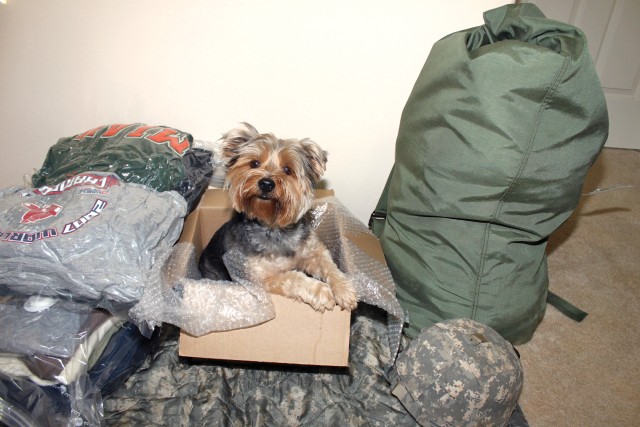HONOLULU -- Military moves can be tough on military families, especially if a spouse is deployed. It's hard enough to get the humans in the family ready for a big move, let alone a family pet.
"Growing up as an Army 'brat,' I moved every three years from state to state and to Europe and back twice," said Kari Mendoza, owner of Island Pet Movers, here. "We always had pets, and our parents taught us that pets are part of the family.
"I served four years in the Navy," she added, "and I can tell you it was hard to find an apartment off-base that would allow me to take my cat, but giving him up was never an option."
Fortunately, many resources are available to ensure your pet stays with your military family and isn't surrendered to a shelter or given away.
A first step is to go online and research the pet policies at your next duty station. A quick call to your sponsor, family-service center or veterinarian at the next installation can help you better understand pet policies in housing, animal laws in that state or country, pet-friendly hotels and any transport requirements.
For example, some states and countries are considered "rabies-free," so you may have to start the process of preparing to ship your family pet several months in advance.
Next, consider calling local airlines to see if there are flight restrictions for your pet, including months when your pet is restricted from flight.
For example, some dogs have respiratory issues due to the structure of their face, making breathing at sea level difficult.
Because of these restrictions, many airlines impose a "pet embargo" on certain dog breeds May 15-Sept. 15, which means you will have to ship your pet outside of this time frame. A visit to the airline's pet transport website should give you information such as cabin temperature, weight requirements, approved airline crates and what stickers and labels should be on the carrier.
Since all pets are transported for hours, or even more than a day, in a crate, it's a must that all military pets are crate-trained. It can take months to get an animal adjusted to the crate environment, and will be the best way to ensure the animal doesn't get stressed in transport.
Air Mobility Command offers space-available flights, commonly known as Space-A travel, for pets, but you may only take two pets and a 14-day travel window is required. Some duty stations don't fly commercial airliners, so you can only book these flights to a destination that has these capabilities.
Also, ensure that your military veterinarian certificates are in order. One form is a veterinary health certificate, Department of Defense Form 2209, "Veterinary Health Certificate" is one form; other form is DD 2208, "Rabies Vaccination Certificate."
When you reach your destination, or if your pet must be quarantined, you may be able to get some money reimbursed. Check with your personnel office to find out more about this opportunity. Finally, check with your tax-filing office to see if some of your pet-moving expenses can be written off when filing income taxes.
For more detailed information, visit Military OneSource. The site has numerous checklists and samples of a military pet care plan. Another great resource is your military legal office, where you can include the family pet in your will and power-of-attorney forms.
As with any other member of your family, it's best to always be prepared for the unexpected when caring for your pet, a lifetime commitment.


Social Sharing